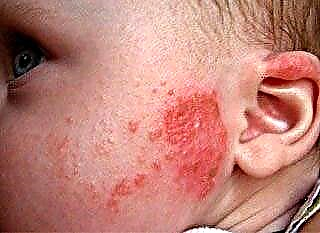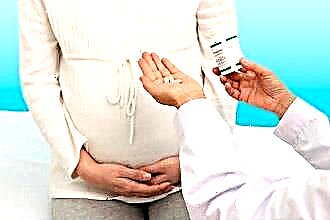It is known that any type of cough, including dry cough, is not a disease, but a symptom. Its appearance is associated with an underlying disease, and not necessarily of the respiratory system. In this case, the body temperature can be normal or subfebrile, which is often considered a sign of weak immunity. In any case, you should find out what a cough without fever means, and what the prognosis may be for an illness with such symptoms.
What disease can we talk about
 Bronchospasm can cause a variety of diseases and conditions. The most common reason for its appearance is air pollution. In addition, allergens, dust, infections enter the respiratory tract. The body tries to get rid of harmful substances with the help of a cough - during an attack, harmful substances are excreted. At the same time, depending on the disease, sputum, mucus, pus, blood or food particles may be released. These additional symptoms appear when the cough becomes wet and the person can clear their throat.
Bronchospasm can cause a variety of diseases and conditions. The most common reason for its appearance is air pollution. In addition, allergens, dust, infections enter the respiratory tract. The body tries to get rid of harmful substances with the help of a cough - during an attack, harmful substances are excreted. At the same time, depending on the disease, sputum, mucus, pus, blood or food particles may be released. These additional symptoms appear when the cough becomes wet and the person can clear their throat.
A severe dry cough without fever is considered a symptom of a number of diseases, including:
- asthma;
- heart failure;
- a tumor in one of the organs of the chest cavity, when the esophagus, trachea, thymus gland can be affected;
- gastrointestinal diseases;
- tuberculosis;
- whooping cough.
Note that whooping cough occurs more often in children. If an adult has a dry cough without fever, this most often indicates an ailment associated with a long "experience" of smoking.
Each of the diseases listed above has its own symptoms, and they can tell you where to look for the true cause of seizures. So:
- morning bronchospasm often indicates the development of bronchitis;
- if the cough bothers at night, there is no temperature, or it is slightly elevated, it may be sinusitis, rhinitis or tuberculosis;
- seizures after physical exertion occur with heart problems;
- a cough while eating may indicate a stomach problem.
 Additional symptoms are only a hint, and no definitive conclusions should be drawn from them. Only a doctor can make a diagnosis after a detailed examination.
Additional symptoms are only a hint, and no definitive conclusions should be drawn from them. Only a doctor can make a diagnosis after a detailed examination.
However, even in the absence of obvious signs of any disease, it is not worth ignoring a dry cough without a high fever, since you can start a serious illness. For example, multiple myeloma or malignant leukemia can only be detected during a thorough diagnosis. Externally, myeloma manifests itself as frequent infectious diseases with damage to the respiratory tract, lingering bronchitis, colds, and a prolonged dry cough is considered natural for it. This disease is more common in people over 60 years of age and with a weakened immune system.
Drug therapy
Immediately, we note that if the throat hurts, treatment should be started as early as possible in order to reduce the load on the muscles of the respiratory tract. When there is a dry cough without fever, treatment can be carried out in several directions: antiviral, antibacterial, anti-inflammatory, antifungal. If necessary, the doctor prescribes drugs to expand the bronchi, relieve an allergic reaction.
If there is a dry cough without fever, and an allergy is found during examination, you should get rid of its source. It is also recommended to cleanse the body; this can be done with the help of Polysorb. To relieve symptoms, antihistamines are prescribed: "Cetrin", "Claritin" or "Suprastin".
 With a viral origin of dry cough without fever, Arbidol, Amizon, Amiksin or their analogs are prescribed. Such drugs are produced separately for the treatment of adults and children, and their appointment requires an individual approach, taking into account the clinical picture. But it should be borne in mind that the proper result with such therapy can be obtained only if the treatment is started within the first three days of the disease, and the course is about 10 days.
With a viral origin of dry cough without fever, Arbidol, Amizon, Amiksin or their analogs are prescribed. Such drugs are produced separately for the treatment of adults and children, and their appointment requires an individual approach, taking into account the clinical picture. But it should be borne in mind that the proper result with such therapy can be obtained only if the treatment is started within the first three days of the disease, and the course is about 10 days.
When the spasms in the bronchi are caused by bacteria, antibiotics are given. These are drugs that have a wide spectrum of action ("Amoxiclav", "Sumamed") or a narrow focus - depending on the disease ("Azithromycin", "Suprax"). Antibiotics are necessary for bacterial forms of bronchitis, pneumonia, bronchopneumonia, bacterial tracheitis.
To stop the inflammatory process, drugs are prescribed that can act directly on its focus. In this category, "Ibuprofen", "Mukaltin", "Bekotid" are considered effective, but you can recover with their help only in the case of the combined use of various drugs.
The best option for taking anti-inflammatory drugs is one tablet after meals for a week or 10 days. To enhance the effect, it is recommended to take vitamins ("Ascocil", "Dekamevit"), as they strengthen the immune system.
Inhalation as a complementary method of treatment
 During such a procedure, warm healing vapors act on the mucous membrane of the respiratory tract, thereby reducing inflammation, coughing up, which is very important for the transformation of a dry cough into a wet one. For inhalation, decoctions of plants with good anti-inflammatory properties are used. The most popular are linden and chamomile flowers, St. John's wort, thyme, calendula, mint, raspberry stems and leaves, bay leaf. When choosing a medicinal plant, one should take into account its properties: bay leaves, for example, can cause poisoning in case of an overdose.
During such a procedure, warm healing vapors act on the mucous membrane of the respiratory tract, thereby reducing inflammation, coughing up, which is very important for the transformation of a dry cough into a wet one. For inhalation, decoctions of plants with good anti-inflammatory properties are used. The most popular are linden and chamomile flowers, St. John's wort, thyme, calendula, mint, raspberry stems and leaves, bay leaf. When choosing a medicinal plant, one should take into account its properties: bay leaves, for example, can cause poisoning in case of an overdose.
To avoid an allergic reaction, you can use a 1% salt solution instead of herbs. This remedy is also suitable for a child. A ready-made solution can be purchased at a pharmacy or prepared on your own: dilute 100 g of pure salt in 1 liter of water. Another recipe for preparing a mixture for inhalation is also popular. Take 1 tablespoon of baking soda, 1 teaspoon of salt and 2 drops of iodine. The prepared solution is placed in a container for inhalation, a session of such treatment lasts 10-15 minutes.
The procedure can be carried out no earlier than an hour and a half after a meal. Inhales should not be taken too deep or intermittently, otherwise you may get burned.
In addition, inhalation should not be done over boiling water or too hot broth. If inhalation is carried out on the basis of a herbal decoction, for an adult it lasts 3 minutes, for children - 1 minute.
However, this is not an effective procedure for everyone. Inhalation is contraindicated in people with hypertension or heart failure. It is also forbidden to use this product at elevated temperatures.
Tips from traditional healers
It has been proven for many generations that it is good to drink warm milk for coughs. It is recommended to use it 3-4 times a day in small sips. The best effect is achieved if a little honey is added to the milk (1 teaspoon per 250 ml of liquid). This mixture helps to stop inflammation and recover faster.
Pine infusion is considered a good remedy. To prepare it, you need only a few twigs with needles of this coniferous tree. They should be poured with boiling water, left for 3-4 hours to form an infusion, and strain. You need to drink a coniferous infusion after meals, 1 tablespoon. It can also be used for steam inhalation, but in this case the infusion must be warm.
Onions and garlic have long been known for their medicinal properties. So, in one of the recipes, it is recommended to take two small onions, cut into small pieces, boil in 250 ml of milk and insist for four hours.Take onion broth should be 1 tablespoon at intervals of 3 hours. You can also boil garlic and onions in milk. Take 10 onions and 1 head of garlic, finely chop and boil until soft. To improve the taste and effectiveness of the treatment, add honey and mint juice. This broth is taken 1 tablespoon at intervals of 1 hour.
For dry coughs, homemade lozenges are a useful and tasty remedy. Take 1 tablespoon of sugar and hold over the fire until the sugar turns dark brown, then move it in a saucer of milk. It is recommended to keep this "candy" in your mouth until it is completely absorbed.
For a speedy recovery, it is recommended to consume more liquid - water, tea, compote, fruit drink, juice, still mineral water. This helps to quickly cleanse the body of harmful substances, promotes the separation and excretion of phlegm and mucus.
In case of bronchospasm, at least two liters of warm liquid should be consumed during the day. In addition, during treatment and prevention, walks are shown, you need to ventilate the room before going to bed and maintain the required level of humidity in the room.



